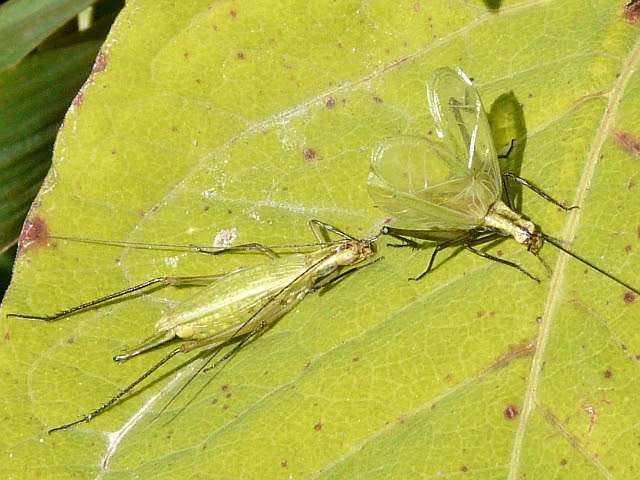How tree crickets tune into each other's songs

It's known as the cocktail-party problem: in the cacophony of sound made by insects in a spring meadow, how does one species recognize its own song?
Insects such as the tree cricket solve this problem by singing and listening at a single unique pitch.
But if that's the case, U of T Scarborough researchers wondered what happens when the temperature changes, because that affects the frequency of the tree cricket's song. The higher the temperature, the higher the pitch.
Natasha Mhatre, a postdoctoral fellow in the lab of Biological Sciences Prof. Andrew Mason, says it's all in their ears.
"When the temperature goes up, the males' wings move faster, so the frequency goes higher," says Mhatre. "The females also need to tune their ears so they can listen to that frequency."
As temperature changes, tree cricket ears adjust at a cellular and therefore mechanical level to match the changing frequency of the song. Mhatre conducted the study with Mason and Gerald Pollack, a McGill University emeritus professor who also works in the Mason lab.
To show this, they used laser Doppler vibrometry, which observes the vibration of any structure, even microscopic cricket ears. They also recorded the reactions of nerve cells to different song frequencies.
The study has been published in the journal Biology Letters.
Five things you probably didn't know about crickets
They're not all the same
There are field crickets and there are tree crickets. (There are also bush crickets, but those aren't 'true' crickets at all.) It's the field crickets who make that chirp you're most familiar with. Tree crickets have a more continuous high-pitched song. You'll notice the sound from higher up, rather than from the ground, because they're found mostly in bushes. Those are the crickets whose pitch is affected by temperature. The UTSC researchers studied the North American tree cricket Oecanthus nigricornis.
They have ears on their legs
Crickets hear through eardrums which are located on their legs, just below their front knees.
Speaking of legs, that's not how they make their calls
Disney would have you believe that crickets rub their legs together to make their sounds. The sounds really come from a set of teeth on their wings.
Teeth on their wings?
Not for eating. The teeth are jagged edges that, when rubbed against the other wing, create a sound that can be surprisingly loud.
Our researchers find their subjects in our backyard
The crickets studied at UTSC are native to the area, so Mhatre quite literally beats the bushes around the UTSC campus to gather sample crickets with an insect net.
Journal information: Biology Letters
Provided by University of Toronto



















